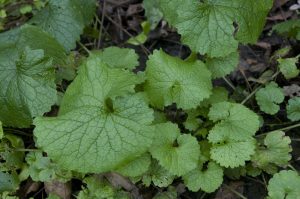June is Invasive Species Awareness Month

What do you think of when you hear invasive species? Some folks see in their minds garlic mustard and buckthorn choking their woods. Others conjure up images of lakes clogged with Eurasian milfoil. Still others may imagine gypsy moths or emerald ash borers attacking their trees. All these threats and more face landowners and those who spend time in the outdoors.
As a landowner, invasive plants tend to present the most common issues for land management. Some problems have been around for many years, like honeysuckle while others like Callery pear (Pyrus calleryana), Palmer amaranth (Amaranthus palmeri) and Lesser calandine (Ranunculus ficaria) are just beginning to show up on the landscape.
Regardless of the threat, prevention is the best strategy for protecting your land. The Wisconsin DNR recommends, “Be careful of materials brought onto your land, especially soil, mulch, compost and plants. They may come with unseen roots, seeds or invasive earthworms.”
Some folks are really deep into controlling invasive species. Each year the Wisconsin Invasive Species Council recognizes individuals and groups that make significant contributions to finding and getting rid of these problems. The Invader Crusader Awards honor professionals, volunteers and organizations that have made a difference across our state. Find out who is making a difference.
To learn more about invasive species in Wisconsin and what you can do to protect your land, keep up regularly with our blog posts, make the Conservation Digest website for conservation management information and check out this article in the Prioritizing Invasive Plants in the current issue of the WDNR Natural Heritage niche magazine.
